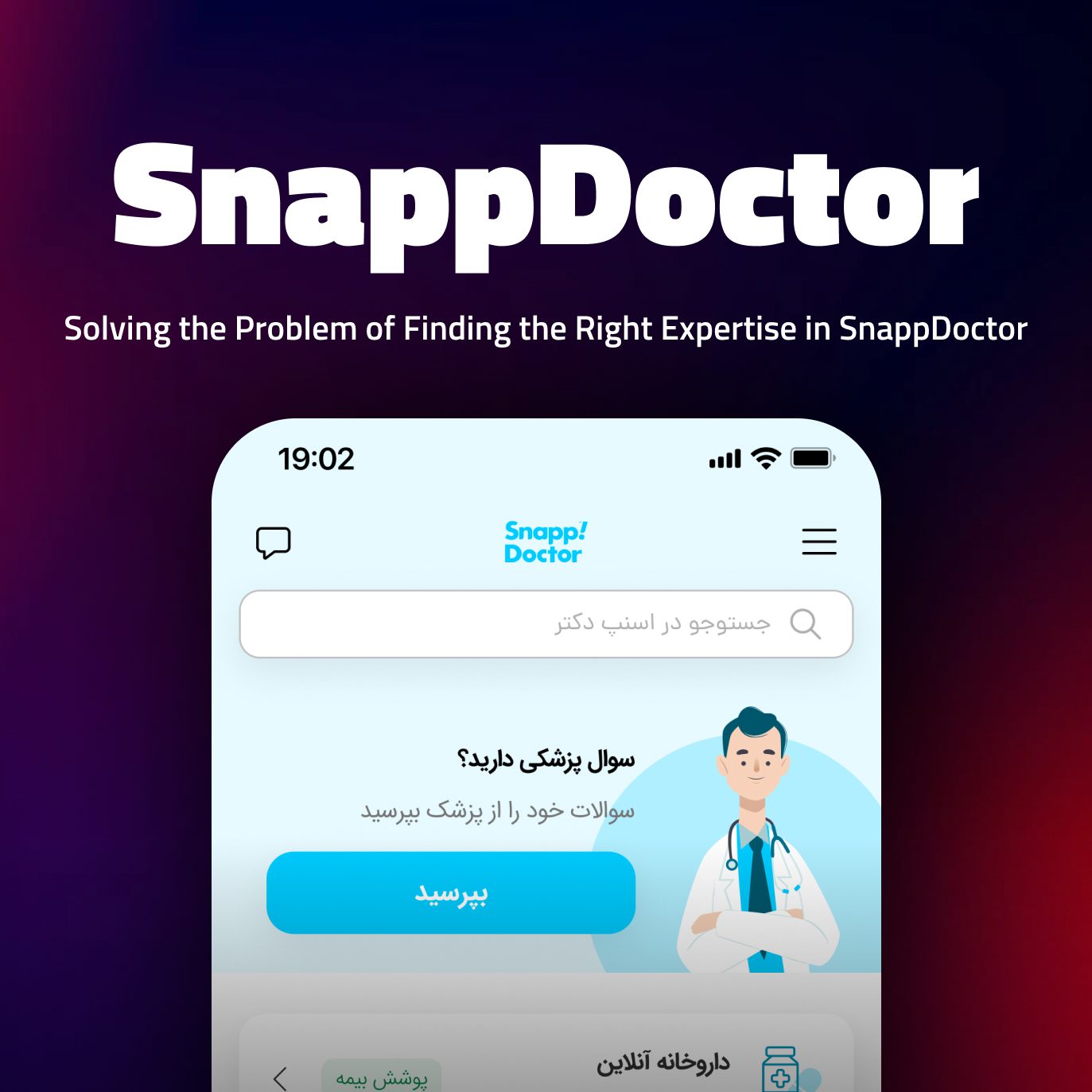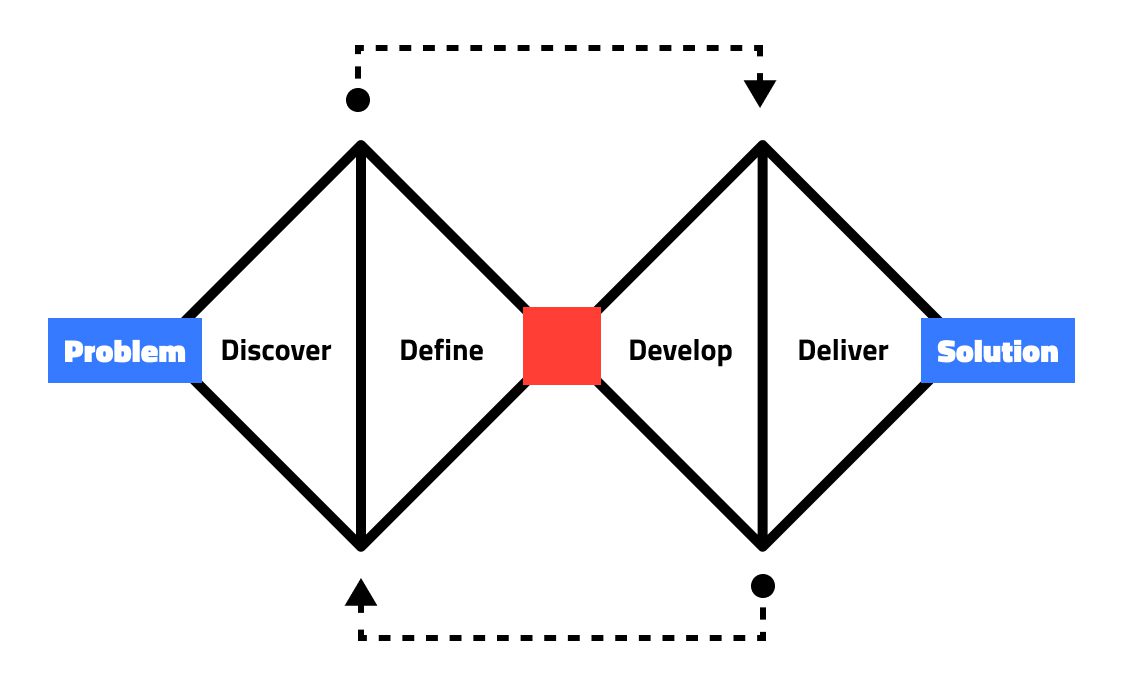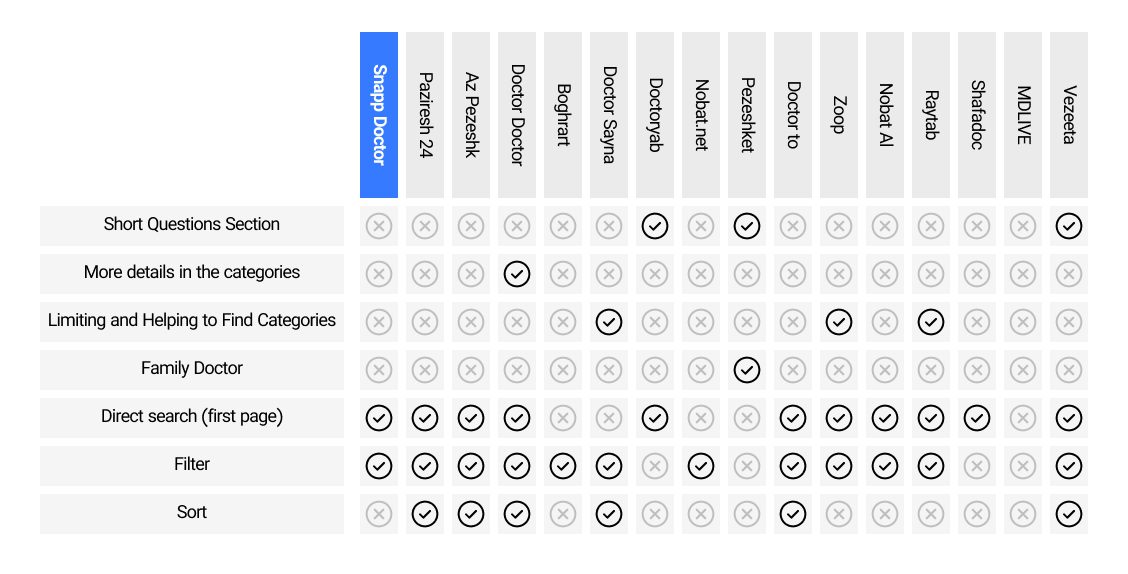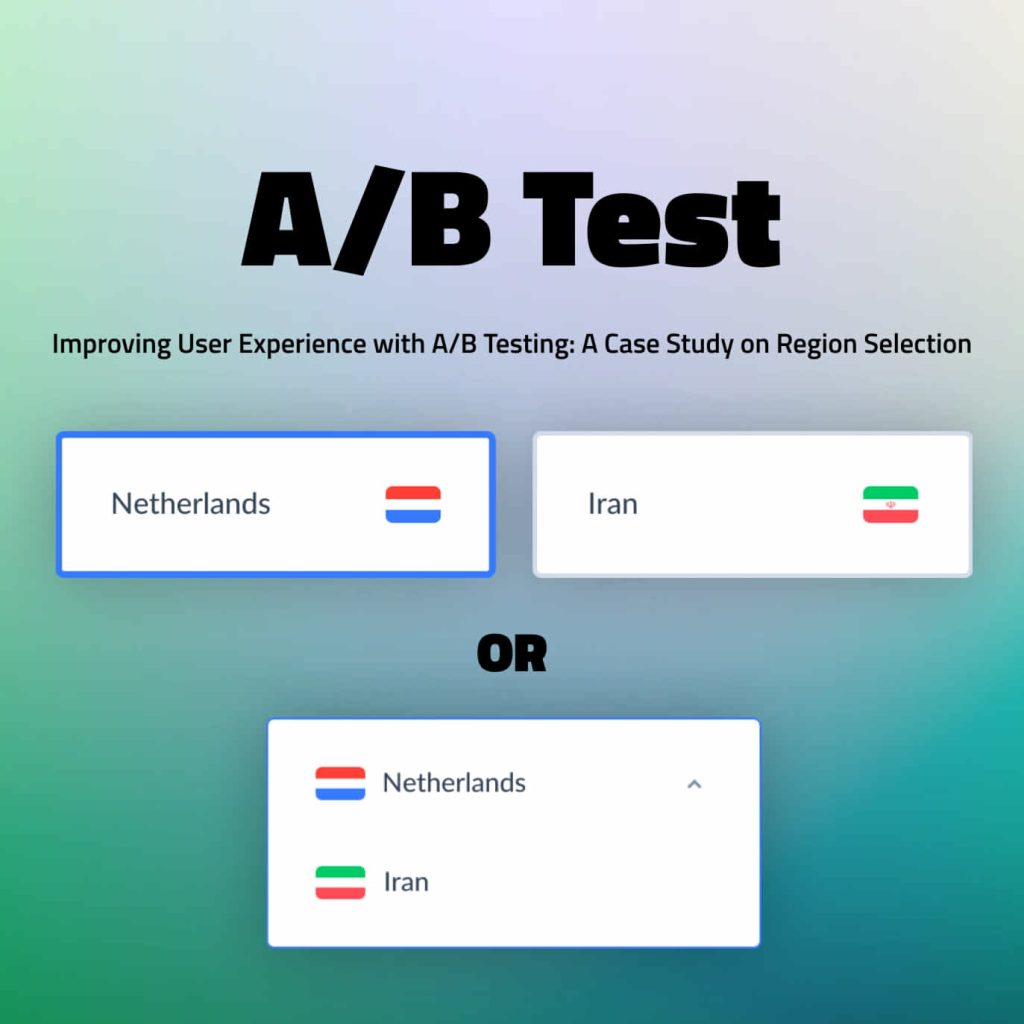

Introduction
In the Snapp Doctor recruitment process, I was presented with the challenge to find a solution to a user’s problem. The user story presented was that a user wants to receive medical advice from Snapp Doctor to treat their abdominal pain, but they don’t know which doctor they should consult with who is an expert in the field related to their disease. The objective was to provide a solution that would allow the user to get advice and find the specialist doctor they want within Snapp Doctor. At the end of the interview process, the final agreements were not made and unfortunately, I was not able to work with Snapp Doctor.
I have never cooperated with Snapp Doctor and I have never worked at Snapp Doctor. This case study is related to the recruitment challenge of this company.
Double Diamond Framework
To solve this challenge, I decided to use the Double Diamond framework, a design thinking process that helps to understand and define the problem, and then develop and refine potential solutions. The framework is based on four principles: Discover, Define, Develop, and Deliver. I will try to explain this framework in detail in the near future.Problem
The user story presented in the challenge is that a user wants to receive medical advice from Snapp Doctor to treat their abdominal pain, but they don’t know which doctor they should consult with who is an expert in the field related to their disease. The user wants to be able to get advice and find the specialist doctor they want within Snapp Doctor to solve this problem. The following diagram illustrates the Double Diamond framework.

In this section, we discussed the challenge presented in the Snapp Doctor recruitment process and our plan to solve it using the Double Diamond framework. The Double Diamond framework is a design thinking process that helps to understand and define the problem, and then develop and refine potential solutions. Our next step is to follow the steps of the Double Diamond framework to develop a solution to the user’s problem of finding a specialist doctor within Snapp Doctor.
Discover
The first step in the Double Diamond process is the discovery phase, also known as divergence. In this stage, it’s necessary to collect data from users and identify challenges and problems in the application flows. The objective of the discovery phase is to gather information about the user’s needs, behaviors, and pain points, which will be used to inform the rest of the process. In order to understand the user’s problem, Snapp Doctor conducted research and collected data on users’ needs, behaviors, and pain points. This data was analyzed and used to identify the challenges and problems that users face when trying to find the right doctor for their needs within Snapp Doctor.Key Findings
The discovery phase revealed several key findings. For example, users reported that they had trouble finding the right doctor on Snapp Doctor and were not sure which doctor to consult for their specific medical problem. The discovery phase was done by the Snapp Doctor team and was sent to me in the submission challenge documentImportance of Discovery
The discovery phase is crucial in the Double Diamond process, as it provides a deep understanding of the user’s problem and helps to ensure that the solution is tailored to their needs.Define
The defining phase of the Double Diamond process is critical in ensuring that the problem is understood correctly. During this convergent phase, it’s necessary to break down the initial problem into smaller components and identify the root causes of the issues.
Problem Statement: As a user, I want to receive medical advice from Snapp Doctor to treat my abdominal pain, but I don't know which doctor I should consult with who is an expert in the field related to my disease. I want to be able to get advice and find the specialist doctor I want in Snapp Doctor to solve this problem.
Data Collection
Upon communication with the Snapp Doctor product designer, it was determined that there was limited access to user data for further analysis of the current problem. The problem was only obtained through some support tickets and no prior data had been collected in this area.
Assumptions
Given the limited data available, I made assumptions about the problem in order to guide further experiments and analyses to test these assumptions at a later stage.
Root Cause Analysis
I used the 5 Why method to break down the problem and identify the root cause. The 5 Whys method is a problem-solving technique that involves asking “why” five times to determine the root cause of a problem. Below you can see the steps taken to get to the root of the problem.
- Why do users have difficulty finding the right doctor within Snapp Doctor?
- Why aren’t users sure which doctor to consult with for their specific medical issue?
- Why is there limited information available on the doctor’s expertise?
- Why isn’t there a system in place to match users with the right doctor?
- Why wasn’t this issue addressed previously? (lack of user data collection and analysis)
The root of the problem and the solution
The 5 Why Method helped to identify that the root cause of the problem was a lack of information on the doctor’s expertise and a system to match users with the right doctor. Improving the process of accessing medical knowledge and explaining the problem (disease) for the application will address this issue and help users find the right doctor for their specific medical needs.
Develop
After the definition stage, in the development phase, I aimed to generate a solution to solve the challenge through the following steps and methods.
Benchmarking of Competitors
The first step in the development process was to review the closest competitors and similar products to Snapp Doctor. This included both domestic and foreign products. However, due to registration issues in Iran, the review of foreign products was limited.

Investigation of User Mental Models
The second stage involved investigating the mental models of the users. I found that users spend most of their time in other applications, and it is more effective to follow these mental models rather than asking users to learn new ways of interacting with the application. Surveys indicated that the most common and quickest solution for users to solve their problems is through asking questions. However, some users do not pay attention to the information and try to navigate the application without finding the information they need.
Brainstorming and Mindmapping
Since I didn’t have access to the Snapp Doctor team or direct data from the product, I decided to simulate a small team and use the brainstorming method. I gathered a group of friends with different backgrounds who were also users of Snapp Doctor and asked them to help brainstorm solutions. I then used the mind-mapping process to guide and refine the ideas generated during brainstorming.Evaluation of Ideas
After thorough evaluation and consideration, four potential solutions were identified to address the issue at hand. However, due to the limited knowledge of the Snapp Doctor product, it was determined that the implementation of a free section for short questions would be the most feasible solution. This option requires the least amount of product information, making it the preferred choice for implementation.

SCAMPER Analysis
Finally, I used a small part of the SCAMPER process to summarize and extract the final output from the ideas generated. I focused on the “Combine” and “Eliminate” steps and took the obtained ideas to the final output.Combination of Ideas
In the combination step, I merged several ideas into a single solution. The result was a “Free Questions” section that allowed users to ask questions and access questions asked by others. This prevented duplicate questions and gave users the opportunity to ask new questions.Elimination of Unnecessary
Features During the process, it was necessary to eliminate some parts of the original idea to improve the user experience. Initially, I planned to charge for questions and offer a limited chat function, but I later decided to remove these features and offer only a single, free question.In conclusion, the development phase was focused on generating a solution to the problem of accessing medical knowledge and advice through Snapp Doctor. The solution was developed through a series of steps including competitor benchmarking, investigation of user mental models, brainstorming, mind-mapping, evaluation of ideas, and SCAMPER analysis.
Solution Proposal
To improve the process of accessing medical knowledge and explaining the problem (disease), I have proposed several solutions to address the issue at hand. These solutions are designed to cater to the different needs and requirements of the user while making sure that they are able to find the information they need.Short Questions Section
One of the proposed solutions was to create a free section for short questions, such as symptoms and diagnosis of the type of expertise related to the disease. This solution requires the least amount of data from both the user and the product, making it the most straightforward solution to implement. I have designed three main page designs and two final designs for the question list page, taking into account the user experience and ease of use. In the delivery section, I will explain why I design multiple pages for each section.Limiting and Helping to Find Categories
The second proposed solution is to limit the categories of the user and improve the selection of the appropriate expertise for the user. This solution would require high-level product data, but it would help the user diagnose their problem (disease) and provide them with the closest specialties to their problem. This solution would be implemented in a graphical mode in the user interface, guiding the user through several stages to diagnose their problem. However, this solution requires further consideration. Due to the lack of time to complete the challenge and also my lack of product knowledge regarding the Snapp Doctor product, I kept this solution only as a suggestion and did not do a visual design for it.Family Doctor
The third proposed solution is to allow the user to choose a doctor as their family doctor for a fixed fee. During the subscription period, the user can have limited phone conversations or communicate with their family doctor through text. This solution builds on the first solution and offers more advanced options for the user. However, it requires further consideration, including the current product offerings, user demand, and Snapp Doctor’s collaboration with doctors. Due to the lack of time to complete the challenge and also my lack of product knowledge regarding the Snapp Doctor product, I kept this solution only as a suggestion and did not do a visual design for it.conclusion
In conclusion, the proposed solutions aim to improve the process of accessing medical knowledge and explaining the problem (disease) for the user.Deliver
To ensures a concise and organized presentation, I have decided to present the delivery step in a separate post. This will allow for a more detailed. The delivery step is an important aspect of the problem-solving process, and it is important that it is given the attention and detail it deserves.
Conclusion
In conclusion, the challenge of improving the process of accessing medical knowledge and explaining the problem (disease) was addressed through a comprehensive and systematic approach. The development phase was carried out using several methods including benchmarking, mental model analysis, brainstorming, mind mapping, and the SCAMPER process.The solution to the challenge was proposed in three parts, including a free section for asking short questions, limiting and helping to find categories, and the family doctor. These solutions were designed with the goal of creating an effective and user-friendly interface for accessing medical knowledge and solving health problems.

